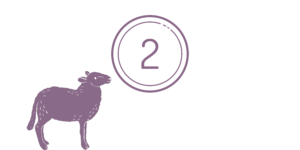

We Have A Podcast Episode On This Subject!
Want to learn about this topic in a different format? Check out our episode of The Open Sanctuary Podcast about easy enrichment tips!
As a caregiver, you want to provide the best care possible for your residents. At times this can seem overwhelming as there is always something new to attend to, and you may lack the time to brainstorm or implement new plans to improve the lives of residents. So often, days are filled running from one task to the next to ensure everyone has been fed, watered, treated, and observed. Often there just doesn’t seem to be enough time for anything “extra.” However, enrichment is an important aspect of general care and can help ensure residents thrive! In this short resource, we will provide a guide you can use to introduce enrichment to your care routine in simple ways meant to allow you to incorporate new experiences for residents one little step at a time. Let’s get started!
Five Steps To Incorporating Enrichment
Implementing an enrichment program may seem impossible for the overwhelmed caregiverSomeone who provides daily care, specifically for animal residents at an animal sanctuary, shelter, or rescue. with a seemingly never-ending to-do list. And, indeed, trying to tackle such a project for every species and individual resident all at once generally isn’t feasible, especially if you don’t have a large care staff or volunteer base. But it doesn’t have to be all or nothing! Every little bit can make a big difference. We hope you will feel more confident incorporating enrichment into your busy schedules by offering examples of small steps.
Start Small!
Small steps can lead to big changes. A daily enrichment program for all residents is a great dream to work towards. (We have a resource in the works that addresses vision and goals when starting a full-fledged enrichment program.) For now, don’t let your idea of a perfect enrichment program prevent you from providing good enriching experiences on a smaller scale.
Step One: Who?

When starting enrichment, take a moment to think about the different species and individuals in your care. This can be overwhelming when deciding where to start. Ask yourself and your care staff the following questions to help narrow down the best starting point. Make a list of three residents or resident groups that came to mind. (Don’t think too hard about this. Eventually, the goal will be to provide enrichment for every resident, but you have to start somewhere!)
- Are there some species that have more barren living spaces than others?
- Are some groups further from “the action” of the rest of the sanctuary?
- Are there groups with social conflict or residents who spend most of their time sitting or lying down (considering health)?
- Is there someone who is currently alone in quarantine or is temporarily isolated?
- Are there specific individuals you have seen displaying abnormal behavior?
Okay, we bet you have some residents in mind! Write down those three resident names or social groups.
Step Two: Why?

Now that you have chosen who to start with, examine who you picked and ask yourself why you chose them. If you haven’t already, write down the species, social grouping (if applicable), and individual(s) that you chose. Now write one sentence about why you chose them. This will help you focus your enrichment ideas for them. Here is an example:
1.Toby, Sorel, Clover, Cayenne, Fresia (Turkeys):
This group is waiting for their bigger outdoor living space to be repaired, and the current space is small and bare.
2. Celeste, Germaine, and Claudette (Pigs):
Germaine is younger, has a lot of energy, and has been nosing on Claudette and rubbing his snout back and forth on the fence post.
3. Dilly (Donkey):
Dilly is a new resident and is currently in quarantineThe policy or space in which an individual is separately housed away from others as a preventative measure to protect other residents from potentially contagious health conditions, such as in the case of new residents or residents who may have been exposed to certain diseases. by himself.
Step Three: What?

Now that you have the who and why, we can look at what type of enrichment might be most beneficial and easy to acquire and implement in the context. If you haven’t yet, check out our resource on the types of enrichment!
Pssst: There are five categories of enrichment: sensory, social, nutritional, physical, and cognitive!
Consider Your Goals
When deciding what enrichment is best for an individual or resident social group, consider what your goals are. Common goals include:
• Increase movement/exploration
• Encourage natural behaviors
• Decrease confrontationalBehaviors such as chasing, cornering, biting, kicking, problematic mounting, or otherwise engaging in consistent behavior that may cause mental or physical discomfort or injury to another individual, or using these behaviors to block an individual's access to resources such as food, water, shade, shelter, or other residents. or harmful behaviors
• Provide comfort
• Prevent loneliness
• Increase resting behavior (for individuals that are temporarily isolated due to injury)
After you have a solid idea of the various enrichment possibilities, pick an individual or group to focus on.
Example:
1. Toby, Sorel, Clover, Cayenne, Fresia (TurkeysUnless explicitly mentioned, we are referring to domesticated turkey breeds, not wild turkeys, who may have unique needs not covered by this resource.):
This group is waiting for their bigger outdoor living spaceThe indoor or outdoor area where an animal resident lives, eats, and rests. to be secured, and the current space is small and bare.
- What enrichment is easily accessible and implemented and makes sense in the context?
- Since the concern here is a barren environment, what are some easy ways to enrich their environment and days that don’t take much time, specialized skill, or money?
Spices: Turkey-safe spices can be easily found in most kitchens and sprinkled in different areas of living spaces for them to explore. Turkeys don’t have a particularly keen sense of smell, so opt for stronger-smelling spices and see how they respond. Diluted essential oils are stronger but should be used carefully, and turkeys should be prevented from making contact with the oils.
Substrate and Snacks: Grab a handful of straw, a shovel full of fresh dirt, sand, leaves, or coconut hull substrate, and make a pile. Toss a handful of turkey-safe treats into the piles for them to scratch through. NOTE: Due to serious concerns over HPAI, it is not recommended to introduce any materials that wild birds may have had access to. It is also important to provide multiple piles so everyone has an opportunity to participate and no one is pushed away by other members of the flock.
Physical Elements: Add some slightly elevated spaces and covered spaces. This can often be done with things you have on hand. Is there a place to roost? To hide? Just keep in mind safety for large breed turkeys jumping down from high places!
Step Four: How?

Now we have the who, why, and what, how will you make it happen? This is when you, as a care team, decide the best enrichment option to start with, how you will procure the enrichment, how you will monitor their responses, and how you will determine whether or not it was successful.
- What enrichment are we using?
- Who is procuring/preparing enrichment?
- Who is setting up the enrichment?
- Who is observing/taking notes?
- How will we decide whether it is successful?
Step Five: When?

Once you have worked out the how, the last step is deciding when to put your enrichment plan into action. When deciding on a day and time, take into account:
- Number of staff available
- Number of trained volunteers
- Other projects scheduled
- Pending vet visits
- Incoming residents
- Meal times
Choosing days when health checks, hoof or nail trims, or other care projects are scheduled to need additional time isn’t generally best for introducing enrichment. Remember, you don’t want to add stress to an already busy day. Additionally, it may not be the best day to start if you have scheduled vet visits or are short on typical staff and volunteer numbers. Once you get the hang of your enrichment schedule and it becomes routine, it will be easier. For now, you are just focused on starting small and building from there. It is also important to decide when the enrichment should be removed or moved as residents will become bored after a time, and some enrichment may need to be supervised for safety issues.
The Importance Of Observation And Recordkeeping
Once you have provided enrichment, it is essential that you observe resident reactions in order to ensure their experiences are positive. If their responses indicate indifference, then you know it isn’t a success, and you will want to try something different. If their reactions are fearful or confrontational or increase undesirable behaviors, then you know it wasn’t successful and should promptly remove the items or cease the activity. Be sure to write this down so everyone on the staff is aware and won’t attempt this enrichment with them again.
You Got This!
While the idea is to eventually have a whole enrichment routine for everyone, it’s okay to break it down into more manageable pieces. Start with this, then move on to the next two resident/resident groups you listed. Once you have done this, make a list of three more. Be sure to rotate enrichment, removing items, aside from physical enrichment, every few days as they may become bored after a time. Check out this list of enrichment-related resources for more information:
General Enrichment Resources
Time To Thrive Series
Time To Thrive: The Importance Of Enrichment!
Time To Thrive: Categories Of Enrichment
Time To Thrive: Considering Enrichment For Species And Individuals
Time To Thrive: Safety Considerations For Enrichment
Nutritional Enrichment At Animal Sanctuaries
Physical Enrichment At Animal Sanctuaries
Social Enrichment At Animal Sanctuaries
Sensory Enrichment At Animal Sanctuaries
Species-Specific Enrichment Resources
Creating An Enriching Life For Alpacas
Creating An Enriching Life For Chickens
Creating An Enriching Life For Cows
Creating An Enriching Life For Donkeys
Creating An Enriching Life For Ducks
Creating An Enriching Life For Geese
Creating An Enriching Life For Goats
Creating An Enriching Life For Horses
Creating An Enriching Life For Llamas
Creating An Enriching Life For Pigs
Creating An Enriching Life For Rabbits
Creating An Enriching Life For Sheep
Creating An Enriching Life For Turkeys
Enrichment Infographics
Time To Thrive: The Importance Of Enrichment Infographic
Time To Thrive: Categories Of Enrichment Infographic








